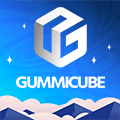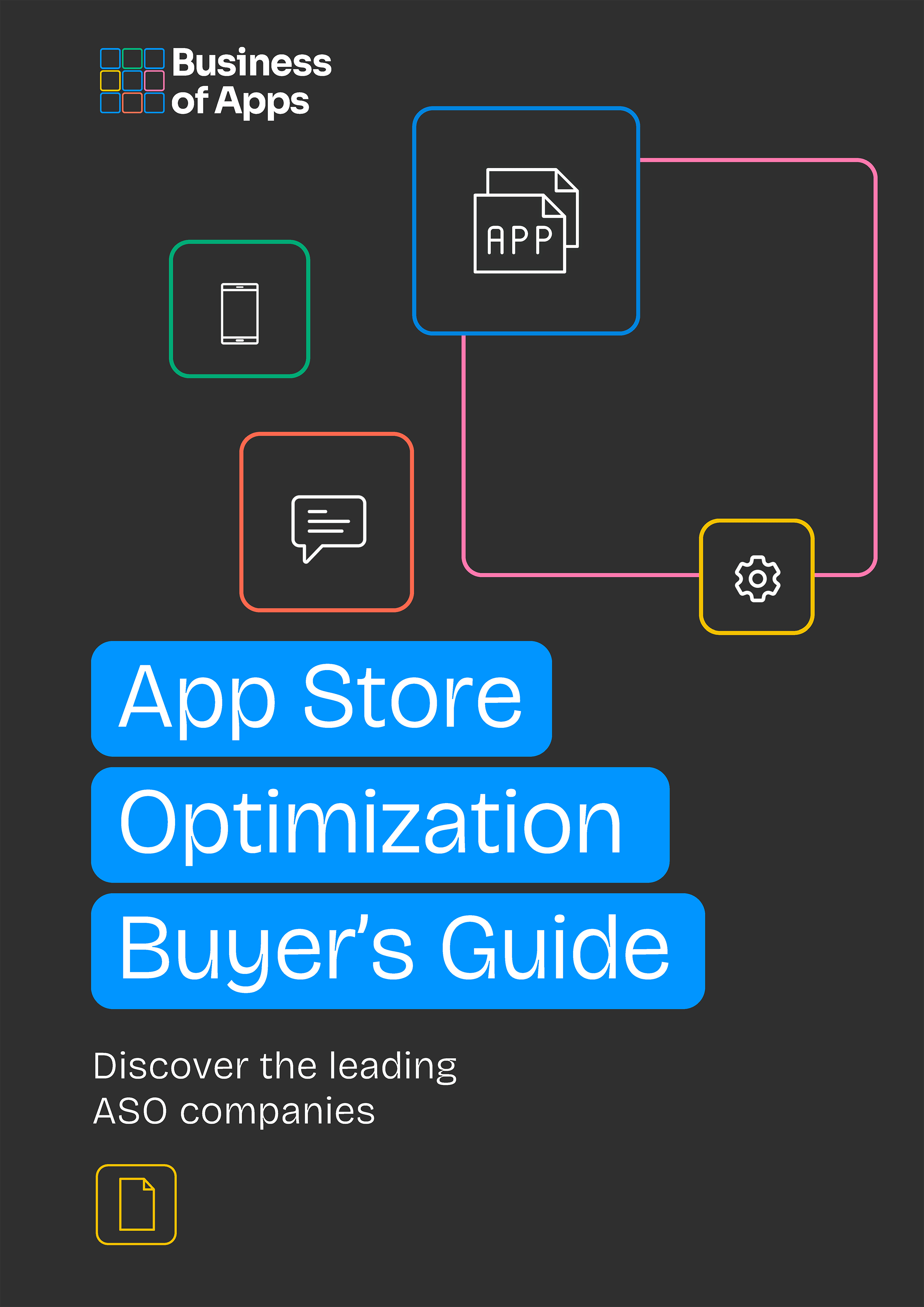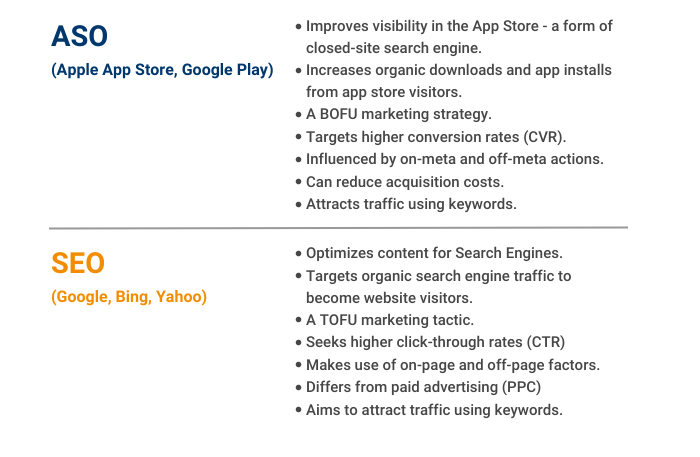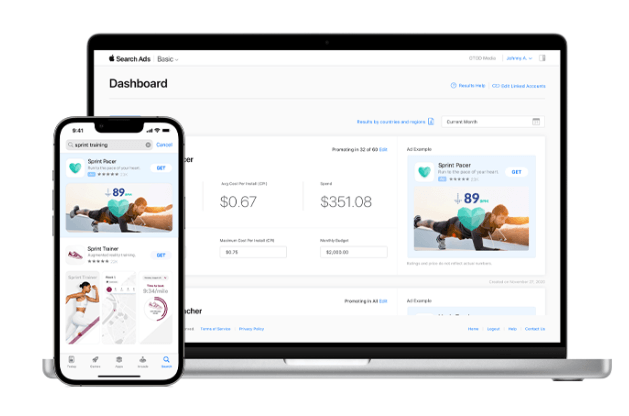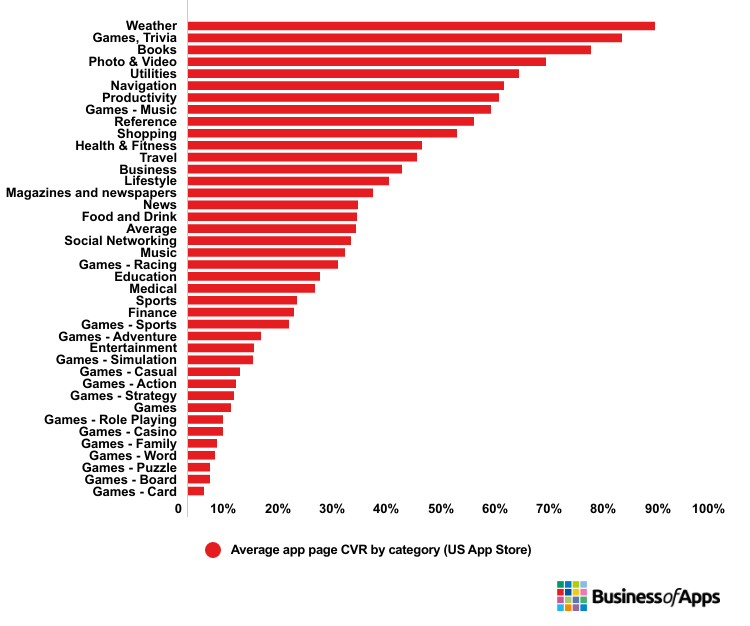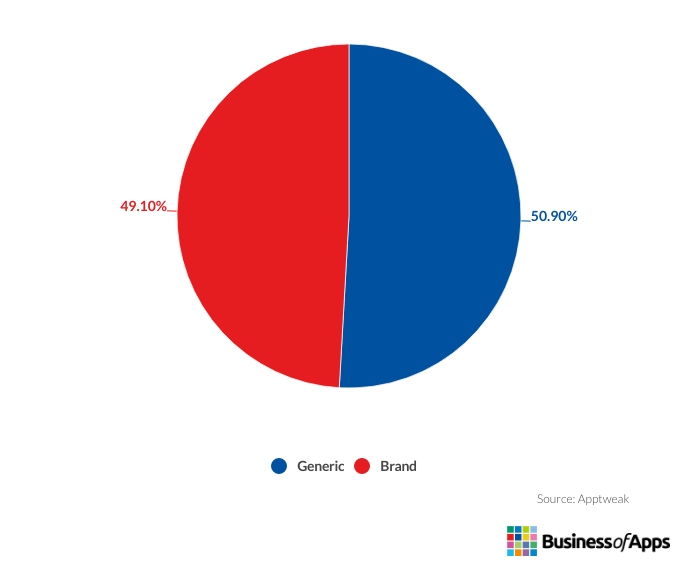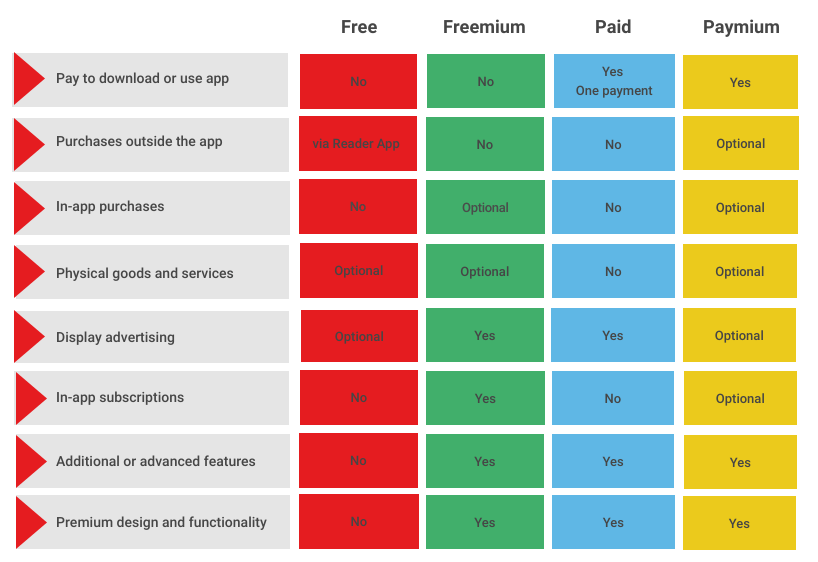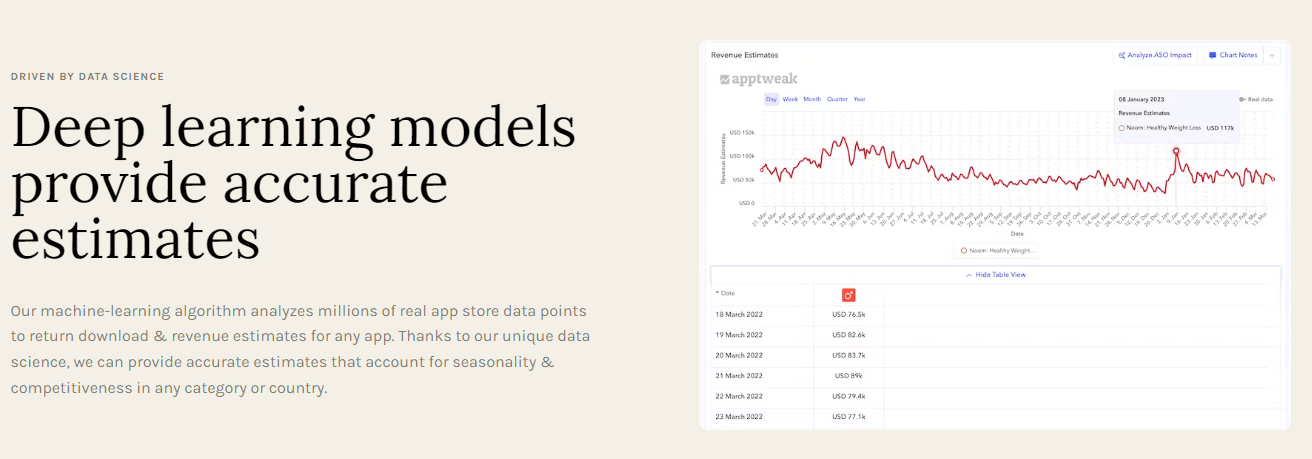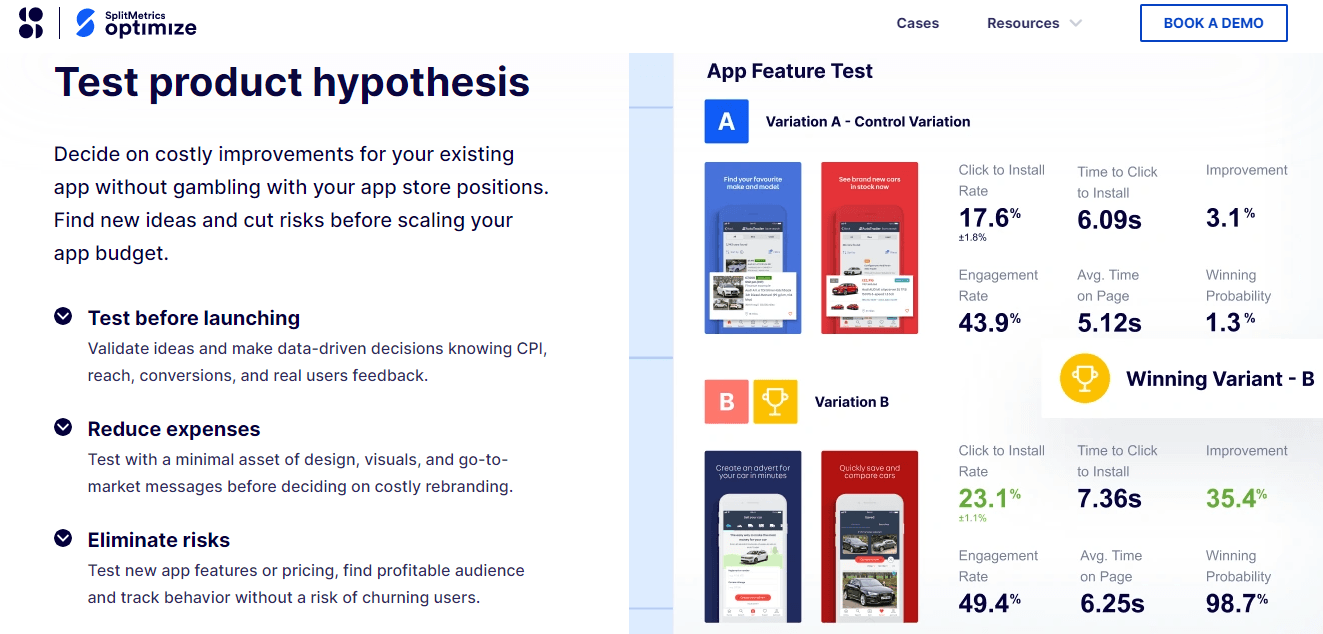App Store Optimization (ASO) is a technique that’s fundamental to app marketing. Without it, conversion rates and install rates remain low. And since the Apple App Store and Google Play stores have an estimated value of around $6 trillion dollars, app owners can capitalize on this value by estimating their app store optimization cost. Also referred to as an ASO cost, this metric helps assess app store optimization pricing while highlighting the potential for increased CTRs and conversions.
In this research page, we’ll highlight the average app store optimization cost and reveal details about app store optimization services. We’ll also provide research on ASO prices and the estimated costs of marketing your apps in the app stores, including data on the costs involved when estimating an app store conversion rate. With this information, you should feel confident when it comes to estimating an ASO cost and gaining knowledge of bespoke ASO practices. With the right approach, it’s possible to increase install and download rates. So, read on to understand more about the most cost-efficient pricing models and how to set the right budget for ASO.
Featured App Store Optimization Companies
Key data points
- Apple App Store and Google Play Store have a combined estimated value of over $6 trillion dollars.
- Only 1% of apps in the Google Play Store reach 1 million downloads, and 70% of apps receive less than 1k installs (Comino et al., 2018).
- Over 60% of apps use Apple Search Ads to promote their apps on websites used by their target audiences.
- ASO can drive conversion rates of over 30% (Kiwi.com).
- An average app store optimization cost can range from free to around $2,000 per month.
- ASO tools can cost upwards of $10,000 per year (Moburst).
- The average ASO conversion rate across US categories in 2022 was 31% on Apple’s App Store and 33% on Google Play (Apptweak).
- Branded keywords drive 49% of all App Store traffic – an increase of 14% from 2019 (Apptweak).
- The quality of app feedback is an influential factor in getting higher conversion rates (M. Karagkiozidoul, C. Ziakis, M. Vlachopoulou, T. Kyrkoudis, 2019).
- 90% of App Store and 80% of the Google Play store visitors see 10% of a page’s content.
- 50% of app installs come from the First Impression Frame, which also has the potential to increase CVR by up to 26% (Storemaven).
- Adding a video can increase visitors’ likelihood of installing an app by 3x (Storemaven).
- In-App Purchases (IAPs) encourage app users to spend 24% more compared to when they only download an app (AppRadar).
- Working with an App Growth manager at an ASO agency may cost around $450 per month and can lead to 1,000% ROI (AppRadar).
What is app store optimization (ASO)?
App store optimization (ASO) is the process of optimizing an app’s position in the app store. ASO targets metadata elements such as app name, description, and app user reviews and ratings. But it’s also about making improvements to UX and other visual aspects. Enhancing these areas can result in an app gaining higher rankings in the app store. And it helps users to find the apps they’re looking for.
Gummicube #1 in App Store Optimization
Elevate your app growth performance with the industry leading experts from Gummicube. Increase visibility, boost installs and reduce acquisition costs. Contact us today for a free consultation.
Contact UsResearch suggests only 1% of apps in the Google Play Store reach 1 million downloads. But also, 70% of apps receive less than one thousand installs (Comino et al., 2018). So, ASO is important for standing out from the competition. And by calculating an app store optimization cost, app owners can expect to increase conversions, installs, and gain higher revenues using two metrics:
- Conversion Rate (CVR): This relates to the percentage who download an app after viewing an app page. If download rates are lower, it may reveal a need to improve an app store page.
- Install Rate: This relates to the percentage of users who install an app from the app store search function in the Apple App Store, but don’t click through to an app page.
Underpinning ASO are two core ASO practices – Keyword Optimization and Conversion Rate Optimization (CRO). Keyword optimization is a process of selecting well-researched keywords to feature in-app titles and descriptions. And CRO refers to the textual and visual aspects of an app product page. In practice, one helps users find an app and the second engages and converts them.
App Store Optimization Buyer's Guide
Download our App Store Optimization Buyer’s Guide, covering all aspects of this essential app marketing technique to drive native traffic to your mobile app.
Optimizing app store metadata will boost app store conversion rates. And while keyword optimization lies at the center of Search Engine Optimization, ASO has a different focus on ranking factors.
Key differences between ASO and SEO
Benefits of investing in app store optimization (ASO)
So why is ASO so important to invest in? Increasing app visibility and appeal while encouraging prospective users to find the apps they’re looking for leads to higher install rates. But there are also many other reasons why it’s worth making an investment.
Improves ranking and visibility in app stores
When an app ranks high in the app stores, users will see that app as more appealing and be more moved to install it. Higher-ranking apps can also achieve higher download rates since users often stay on the first few pages of the stores and don’t scroll through every search result.
Reduces CAC costs
Getting higher numbers of conversions can improve ROI by reducing the cost of acquisition. The more users you convert the lower your Customer Acquisition Costs will be. One lower-cost strategy for reducing CAC is by blending organic and paid ads. Over 60% of apps deploy Apple Search Ads to promote their apps on websites where they know their target audience hangs out.
Visual representation of Apple Search Ads
Source: Apple Search Ads
Increases organic installs and retention
Creating enticing app icons, posting videos, or planning a decent social media push are all ways to increase organic installs and keep retention high. Such ASO tactics are investments into long-term strategy since these tactics help to maintain a high-ranking app store position.
Attracts high-intent users
Companies that do the work on audience profiling have an opportunity to target the most relevant users using ASO. Approaching their strategy this way encourages higher-quality leads and potential new users. And it’s high-quality users who are more likely to engage with and stay using an app in the long-term.
Boosts app revenue & conversion rates
One of the Top 5 biggest airline ticket sellers in Europe, Kiwi.com drove a conversion rate increase of over 30% through ASO. They did this by analyzing current ASO activity that showed issues with keyword optimization, metatags, and lack of localization. By working with a partner to identify these issues, Kiwi.com increased conversions and long-term revenue.
How much does App Store Optimization cost?
Gaining an accurate sense of ASO prices isn’t straightforward. It relies on assessing a range of influential factors and pricing options. Having said that, it is possible to limit options to a choice of in-house expertise, a specialist agency, or ASO tools. Across each option, the average app store optimization cost ranges from free to $9 per month up to $2,000 per month. An ASO review by Moburst suggested ASO tools can cost upwards of $10,000 a year. But they also explain how appointing an agency can be more cost-effective for boosting app visibility from activities like PR outreach.
It’s important to review each support channel on its own merits. But in particular, ASO tools can offer targeted help in the following ways:
- Data sources that help with gaining an edge over the competition
- Help with forming marketing optimization strategies
- Simple competitor analysis
- Monitoring ranking in the app stores
We’ll summarize some of the average costs of App Store Optimization pricing and highlight factors that can influence an ASO cost in this article.
How to reduce an App Store Optimization cost
The most important aim when engaging in ASO activity is driving higher conversion rates (CVR). According to reports by AppTweak, the average ASO conversion rate across US categories in 2022 was 31% on Apple’s App Store and 33% on Google Play. The app vertical with the highest CVR was Weather at 86%. Reaching for higher CVR and install rates can result in lower long-term costs and improved ROI. So, finding the most cost-effective ways to drive ROI from higher rates of app downloads is an important focus.
Average app page CVR by category in 2022 (US App Store)
Source: Apptweak
App store optimization cost strategies
To help estimate an ASO cost, there are some key strategies worth investing in to gain strong conversion and app install rates. Here are some of the more significant ones.
Keyword research
As highlighted, keyword optimization is a critical factor in ASO. Research highlights over 60% of app installs occur after a prospective user searches for a specific keyword. So, conducting a thorough process of research is vital for maximizing the potential of keyword optimization.
When researching keywords for ASO, a key factor is to use both brand and generic keywords. AppTweak reports how branded keywords drive almost 50% of all App Store traffic, which is an increase of 14% from 2019. Branded keywords are words that are specific to a brand. Think of the obvious ones like Netflix, Uber, and Spotify. Generic keywords, instead, refer to day-to-day products or services that sit outside of that brand. An example might be products like watches, earrings, and necklaces sold by an e-commerce retailer.
Percentage of App Store Traffic by keyword
Source: AppTweak
AppTweak also reports that higher keyword search volumes come from brands. Across the whole range of volumes for generic and brand distribution, the keywords with search volumes above 90 are all from brands.
Keyword optimization and Conversion Rate Optimization (CRO)
Keyword optimization and CRO are two key ASO disciplines that do two different things. One will boost visibility in the app store by enabling prospective app users to find what they want. The other has a goal of hooking them in to convert them to an app install. Gaining higher rankings will only come with strong keyword research and the application of the most searched-for keywords when optimizing app metadata. Key aspects of keyword optimization to focus on include:
- App Store: App name, URL, subtitle, keyword field, rating and reviews, in-app purchases, no. of installs, app updates.
- Google Play Store: App title, app description, in-app purchases, rating and reviews, no. of installs, update cycle, downloads, and engagement.
With metadata optimized, it’s then down to the CRO process to focus on UX and design enhancements or the optimization of creative assets like icons, videos, and visual presentations. Each action will encourage new users to install the app and ‘convert’ to regular users, leading to a lower ASO cost.
Monitoring app reviews and ratings
The quality of feedback an app receives is an influential factor in getting higher conversion rates. ASO research by M. Karagkiozidoul, C. Ziakis, M. Vlachopoulou, T. Kyrkoudis (2019) confirms this, with researchers citing both User Reviews and Ratings as two of eight confirmed factors in increasing app store ranking. Their complete list of essential ASO criteria is:
- Installs Volume: Search engines assume that apps with higher download rates are more popular, so rank them higher.
- Ratings: Apps that have positive ratings encourage search engines to rank the app higher in the app store.
- User Reviews: Reviews left by users can also encourage search engines to rank apps higher.
- Screenshots and videos: The researchers suggest visuals will increase the total downloads of the app, leading to better ranking in results.
- Description: The goal of any app store description is to convert a prospect or app store visitor. Keywords should be a core focus and optimized as far as possible.
- App localization: Tailoring aspects of an app to different regions or global territories, like adjustments to language, helps with ranking.
- Application name and title: Titles are important for ASO and may include brand and generic keywords.
- Application icon: App icons represent the brand and will be different depending on the requirements of each app store.
Competitor analysis
An essential part of ASO is conducting competitive analysis with other companies in the app stores. Evaluating apps with similar features and functionality can reveal untapped areas for growth or development. Carrying out an ASO competitor analysis focuses on the two main pillars of ASO – keyword optimization and CRO.
Using keyword optimization tools like SEMRush and Ahrefs can help to research competitors’ keywords. Checking competitors’ styling, UX, and design features like backgrounds can all help to generate valuable insights. Two specific ways to do this would be:
- Reviewing competitors in the same app category and subcategories: Reviewing how the top-ranking apps in your own category and subcategories perform can help to find potential design trends and patterns to explore.
- Analyzing pages of individual apps: Analyzing the individual product pages from other apps and picking out specific areas they succeed in can help to benchmark your own performance.
Factors that will influence an app store optimization cost
Getting an app store optimization cost to the lowest point possible relies on boosting CVR and installs. With a higher number of installs comes better ROI. And getting those numbers higher is possible in a few different ways we outline below.
Keyword optimization
This is one of the main pillars for driving a lower app store optimization cost. It’s underpinned by effective keyword research. Good keyword optimization should start with the creation of a list of keywords. By researching your competitor keywords and finding keyword gaps, it’s easier to boost visibility and gain a competitive advantage. Keyword strategy and planning can also lead to increased CRO. Some of the more targeted aspects of keyword optimization include:
- Using keywords in metadata: Being strategic in the use of keywords helps with boosting visibility.
- Writing compelling app descriptions: Keyword optimization isn’t only about tailoring to ASO ranking. They also need to be attractive and enticing for app installs.
- Linking features to benefits: Writing accurate descriptions of features is vital. But linking descriptions to tangible benefits that change or enhance customers’ lives is too.
- Tracking your keywords: Analytics can help to track visibility and conversion rates.
- Using an ASO tool: Understanding which keywords are driving downloads with a focus on branded and generic keywords too.
Conversion Rate Optimization (CRO)
90% of App Store and 80% of the Google Play store visitors see 10% of a page’s content. And to increase conversion rates depends on many factors. These can range from more simplified UX and UI to including high-quality screenshots and impactful App Store icons. Optimizing loading speeds is also critical to encouraging higher CRO. But there are some specific ways to boost CRO worth mentioning.
- Optimize the First Impression Frame: Storemaven’s ASO Academy suggests 50% of app installs come from the First Impression Frame. They also say that it has the potential to increase CVR by up to 26%.
- A/B test your assets: Product Page Optimization on Apple App Store and Google’s Store listing are handy features to use via A/B testing. Plus, native A/B testing is set to become more important than ever in 2023 according to App Radar.
- Choose a screenshot design strategy: Screenshots have a direct impact on CVR rates. So it’s worth deciding whether to use feature or lifestyle screenshots or a hybrid of both in your app stores.
- Create a strong app video: Storemaven’s ASO Academy also reveals that adding a video can increase visitors’ likelihood of installing an app by 3x.
Median App Page Scroll Depth on the App Store and Google Play (%)
Source: SplitMetrics
Performance monitoring
The best way to measure the impact of ASO activity is through monitoring and tracking KPIs. And selecting the right analytics and tracking tools can help to determine the right KPIs to look at. But determining KPIs and monitoring how they perform is the only real way to uncover whether efforts are paying off.
Yodel Mobile suggests a counterintuitive approach is to find the ‘Loser Metric’. An example of a loser metric is selecting a keyword to rank for. Analyzing around 5-10 close competitors or peers who use that keyword can help to determine a benchmark for conversion. And if you find that your keyword performance is under minimum benchmarks or not in the top 5 of conversions, it reveals a losing area to focus on. And revealing metrics of underperformance to focus on, In the short term, working towards metrics that offer the highest uplift potential will increase your chances of an impactful short-term strategy, and set the blueprint for your long-term focus.
ASO cost by platforms
Variations between Apple App Store and Google Play Store will influence the budget for an ASO cost. Each one uses a different set of algorithms and search results displays, but also shows differences in marketing potential. For example, Google Play Store and Apple App Store allow different elements on a product page. Also, the Play Store allows space for one promotional video whereas Apple allows up to three. With these considerations, it’s wise to budget for a separate Google app store optimization cost and an iOS app store optimization cost.
Google app store optimization cost
Achieving high rankings and strong CVR in the Google Play Store comes from improving app visibility. One way to help users find your app is by optimizing metadata keywords. But Google Play also considers other factors such as app retention rate, app download numbers, velocity, performance in the store, and user reviews when ranking apps in the store.
Technical aspects are also important for ranking. If left unaddressed it can lead to reduced Browse traffic and lower keyword rankings. To manage this,Google offers Android Vitals through the Play Console. Android Vitals is basically analytics for technical aspects and allows for improvements while avoiding penalties that may hinder rankings.
And while it’s not directly related to ASO, knowing how App Store fee structures work may help with planning an app store optimization cost. For Google Play Store, in recent years, marketing fees have been reduced from 30% to 15%.
Google Play Store app advertising fee structure
| Service Fee Type | Service Fee |
|---|---|
| Developers enrolled in the 15% service fee tier | 15% for the first $1M revenue earned by the developer each year. 30% for earnings in excess of $1M revenue earned by the developer each year. |
| Subscriptions | 15% for automatically renewing subscription products purchased by subscribers, regardless of revenue earned by the developer each year. |
| Other transactions | 15% or lower for eligible developers who qualify under programs such as the Play Media Experience Program |
Source: support.google.com
iOS app store optimization cost
Competition is fierce in the Apple App Store and making sure you’re ahead of the competition is the best way to succeed. There are plenty of tools and strategies on offer to support ASO ranging from smart banners and promotional codes to pre-orders and paid user acquisition like Apple Search Ads.
In particular, in-app purchases or IAP have a big impact on keyword optimization and CVR. AppRadar suggests IAPs encourage app users to spend 24% more than when they download an app. Plus, IAP keywords are usually indexed and the promoted listing appears close to app search results. Apple allows for promoting up to 20 in-app purchases at any one time to be visible in the App Store Search. In-app purchases can also encourage higher install rates when users want a promoted in-app item but don’t have the app installed.
When considering an ASO cost in the App Store, Apple offers four types of business models – Free, Freemium, Paid, and Paymium. Choosing the right one for your app marketing needs can lead to lower costs and higher conversion rates. So it’s worth reviewing the options to decide which one works best for your business.
Apple App Store business model types
Source: developer.apple.com
Types of ASO services
So what are the different types of ASO services available? We can divide these into three categories: In-house, agency, and ASO tools. You may be lucky enough to have some in-house expertise to support a lower app store optimization cost and avoid any extra fees. But in reality, most apps will need to engage with third parties in the form of ASO agencies or ASO tools.
The range of app store optimization services offered can include ASO tools that support keyword research and performance tracking to relevant ASO techniques like in-app events. App owners can work directly with agencies or subscribe to use an ASO on a regular basis.
An example of app store optimization agency costs
Working with an ASO agency may help to leverage a range of app store optimization services which is also known as a Full-Service approach. For instance, Ironhide Game Studios chose to work with AppRadar to increase app installs for two of their titles. By sharing learnings from the improvements they made, they applied these to a further title and increased organic installs by 300%. With a limited budget and resources for external marketing, the ASO lead at Ironhide Game Studios, Paula Bentancur suggests they also gained from a period of knowledge transfer which resulted in 1,000% ROI.
“With the workshops, presentations and hands-on advice I could get from App Radar, I also learned a lot and could optimize further Titles myself. This led to an additional growth for other games!”
Paula Bentancur – Head of Marketing at Ironhide Game Studio
Source: AppRadar
Working with an App Growth manager in this way–in conjunction with an ASO tool–may cost around $450 per month. AppRadar’s Enterprise-level support may be more bespoke, though, so it’s worth considering long-term and short-term needs and sourcing a quote that can match the needs. And that could be a hands-on, Full-Service approach or it could be subscribing to an ASO tool.
An example of costs for app store optimization tools
While some agencies can include ASO tools as a part of their service offering, they’re also accessible as a single item. ASO is useful for conducting keyword research, competitor analysis, increasing a user base, and tracking ranking in app stores.
ASO tool subscription costs can range from completely free to use to $2,000 per month. Google Play Console, for example, asks for a one-time fee of $25 to start tracking ASO amongst other features. App Store Connect is free to use but will cost up to $99 to use the Apple Developer Program. As an example of paid-for ASO tools, Apptweak offers the following packages:
- Starter: $69 per month for 400 keywords, good for beginners
- Pro: $199 per month for 1500 keywords, good for small teams
- Guru: $299 per month, for search advertising insights
- Power: $599 per month, for larger companies managing multiple apps
- Enterprise: Apptweak also offers Enterprise-level solutions with ASO training
Screenshot from Apptweak.com
Source: Apptweak
A further example is SplitMetrics, which offers three-tiered subscription packages:
- Basic: Includes 12 tests, product and search pages, and dedicated customer service. ASO cost: $13,000 dollars per year
- Advanced: As per the Basic package but with a dedicated enterprise manager and A/B testing. ASO cost: $26,000 per year.
- Managed Support: As per the Advanced package but with ongoing support and experimentation with extra large volumes: ASO Cost: $33,000 per year.
Screenshot from SplitMetrics.com
Source: SplitMetrics
Some of the different types of ASO tools can include:
- Generalists: All-rounder tools will cover everything mentioned above, giving comprehensive access to all aspects of ASO.
- Keyword-focused: These types of tools can track keywords and keyword rankings and offer keyword suggestions that may support competitor research.
- Testing tools: A/B testing can help to determine which choice of app store page performs the best. These tools can conduct audience segmentation for A/B testing and compare results.
- Translations: ASO tools can help to expand into international markets where you may need to identify keywords in different languages. Some tools can also suggest landing page formats that may be more appropriate or better received in particular territories.
- Search Ads: Tools that offer search ad support or blend with other marketing services may support the type of apps that rely on advertising to generate leads and conversions.
- Market-focused: Specific industries or certain types of apps may need a more specialist tool. For example, freemium apps rely on in-app subscriptions.
Final thoughts
App owners must consider many different variable factors when deciding on the app store optimization cost. With CRO and Keyword Research driving the process, ASO can boost conversion rates and keep an ASO cost low. The best place to start is to consider your size, scale, aims, and goals, and find the right tools or support to match. You may have more limited budgets and want to boost installs or gain traction in different geographies, in which case it may be worth trying an off-the-shelf ASO tool. But many app owners will find extra benefits when partnering with ASO agencies that can offer longer-term ROI through knowledge sharing. By maximizing CVR through optimized product pages, first impression frames, and A/B testing, you’ll find it’s easier to drive a lower ASO cost and gain higher conversion rates in the long term.


